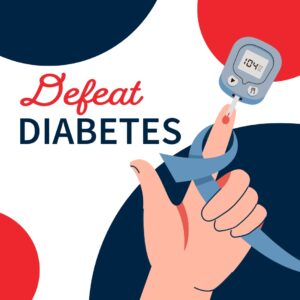Sprains & Strains
In the hustle and bustle of life, injuries like sprains and strains can happen to anyone. We understand that these injuries, although common, require expert care for a speedy recovery.
Sprains vs. Strains: What's the Difference?
Sprains involve the tearing or stretching of ligaments, which are the bands of connective tissue that hold joints together. On the other hand, strains are injuries to muscles or tendons, the cord-like tissues that attach muscles to bones.
Causes and Characteristics
Sprains can occur due to incidents like falls, twists, or impacts that force a joint out of its normal position. Ankle sprains are particularly prevalent, with over 3 million cases reported annually. Common signs of a sprain include pain, swelling, bruising, instability, and limited mobility.
Strains typically result from the overexertion, twisting, or pulling of muscles or tendons. These injuries can be sudden or develop gradually. Hamstring and back strains are frequently encountered. Strain symptoms encompass pain, muscle spasms, weakness when using the affected muscle, cramps, swelling, bruising, instability, and mobility restrictions.
Who's Prone to Sprains & Strains?
Both contact and non-contact sport athletes are susceptible to these injuries. Contact sports often lead to sudden strains, while non-contact activities like tennis, golf, and swimming can cause gradual strains due to repetitive motions.
Treatment: Swift and Effective
Seeking prompt medical attention with us is essential if pain and swelling persist for 72 hours or if you can’t bear weight on the affected area.
Most sprains and strains can be managed at home using the “RICE” approach:
- Rest: Avoid putting weight on the injured area for 24-48 hours.
- Ice: Apply ice to the affected area as soon as possible after the injury for 10-20 minutes, 4-8 times a day during the first 48 hours.
- Compression: Gently wrap the area with an elastic bandage to reduce swelling. Ensure not to wrap too tightly, which could worsen the swelling.
- Elevation: Elevate the injured area to prevent fluid buildup and reduce swelling.
We provide optimal care for sprains and strains. Our highly trained staff and on-site X-ray services ensure you receive timely and effective treatment. As a walk-in clinic, we prioritize your convenience, eliminating the need for appointments or lengthy waits in an emergency room. Your recovery starts here.
Frequently Asked Questions
What's the difference between a sprain and a strain?
- A sprain involves the tearing or stretching of ligaments, which are the tissues that connect bones at joints.
- A strain, on the other hand, is an injury to muscles or tendons, which connect muscles to bones.
What can cause a sprain?
Sprains can occur due to various incidents, including falls, twists, or impacts that force a joint out of its normal position. Ankle sprains are particularly common, affecting over 3 million people annually.
What are the typical symptoms of a sprain?
Common signs of a sprain include:
- Pain
- Swelling
- Bruising
- Instability in the affected joint
- Limited mobility
What causes a strain?
Strains usually result from overexertion, twisting, or pulling of muscles or tendons. These injuries can be sudden or develop gradually over time.
What are the symptoms of a strain?
Strain symptoms may include:
- Pain
- Muscle spasms
- Weakness when using the affected muscle
- Cramps
- Swelling
- Bruising
- Instability
- Limited mobility
Who is more prone to sprains and strains?
Both contact and non-contact sports athletes are susceptible to these injuries. Contact sports often lead to sudden strains, while non-contact activities like tennis, golf, and swimming can cause gradual strains due to repetitive motions.
How can I treat a sprain or strain at home?
Most sprains and strains can be managed at home using the “RICE” approach:
- Rest: Avoid putting weight on the injured area for 24-48 hours.
- Ice: Apply ice to the affected area as soon as possible after the injury for 10-20 minutes, 4-8 times a day during the first 48 hours.
- Compression: Gently wrap the area with an elastic bandage to reduce swelling. Ensure not to wrap too tightly, which could worsen the swelling.
- Elevation: Elevate the injured area to prevent fluid buildup and reduce swelling.
When should I seek medical attention for a sprain or strain?
It’s crucial to see a medical professional at Midwest Express Clinic urgent care if pain and swelling persist for 72 hours or if you can’t bear weight on the affected area.
Why choose Midwest Express Clinic for sprain and strain care?
Midwest Express Clinic offers expert care for sprains and strains. Our highly trained staff and on-site X-ray services ensure you receive timely and effective treatment. As a walk-in clinic, we prioritize your convenience, eliminating the need for appointments or lengthy waits in an emergency room. Your recovery starts here.
Sprains and strains treatment is available at these locations:
Illinois
Aurora
Blue Island
Bolingbrook
Bourbonnais
Burbank
Calumet Park
Carol Stream
Chicago Ridge (coming soon)
Cicero
Elmhurst on Butterfield
Elmhurst on York Street (coming soon)
Lombard
Matteson
Melrose Park
Norridge
Northbrook
Richton Park
River Forest
Skokie
Tinley Park on Harlem
Tinley Park on LaGrange
Westmont (coming soon)
Wheaton (coming soon)
Willowbrook
Indiana
Cedar Lake
Crown Point on Burr & 30
Crown Point on 109th & Broadway
Dyer
Griffith
Griffith next to Walgreens
Hammond on 5th Avenue
Hammond on Sibley
Hobart
Merrillville
Merrillville next to Walgreens (coming soon)
Michigan City
Munster
Portage
Portage next to Walgreens (coming soon)
Schererville





